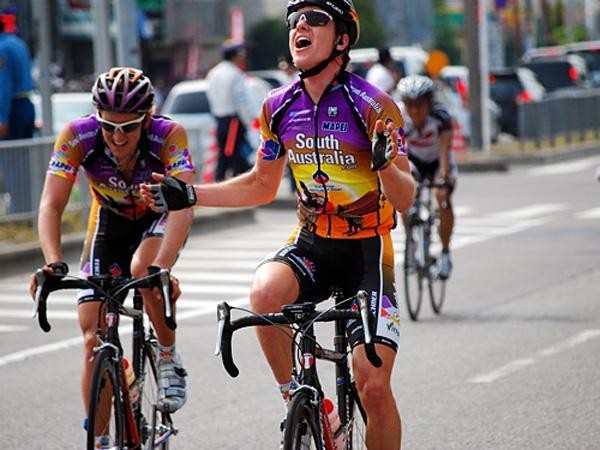Clarke joins winner's list in Tour of Japan
SouthAustralia.com-AIS rider Simon Clarke has notched up a third stage win for the team, with...

SouthAustralia.com-AIS rider Simon Clarke has notched up a third stage win for the team, with victory in the fourth stage of the Tour of Japan. Cameron Meyer crossed in third place, with team mate Wesley Sulzberger fifth on the stage.
Sulzberger remains in the overall lead, with Meyer one second behind and Japan's Yukiya Arashiro ranked third at 26 seconds.
Today's fourth stage was one of the toughest of the Tour, with the peloton contesting 12 laps of the Shimohisakata circuit, for a total distance of 155.3km.
"It was basically five kilometres up, five kilometres down and two kilometres across," said Clarke. "It was bloody hard and everyone was so tired at the finish it was more of a grovel for the finish line than a sprint."
Team Director Brian Stephens said the aim today was to defend the positions of Sulzberger and Meyer by going on the attack and that tactic paid off for Clarke at the finish.
"Simon didn't have to do any work in the break because he was protecting our lead," said Stephens. "That meant he had pretty fresh legs at the end when the break had been caught and could go for the win."
Clarke explained that "I stayed away over the top of the climb, but with about five kilometres to go I got caught by a group of around a dozen riders, including Wes (Sulzberger) and Cam (Meyer). That gave us the manpower to go with all the last ditch attacks and in the end I managed to score the win."
Get The Leadout Newsletter
The latest race content, interviews, features, reviews and expert buying guides, direct to your inbox!
Clarke won the stage in 3hr53min27sec with ten other riders finishing on the same time. Meyer's third place gave him a four second time bonus.
Tomorrow, Thursday, is a travel day for the race, which resumes on Friday with an 11.4-kilometre individual time trial on Mount Fuji. The massively steep climb will take the riders from an altitude of 600 metres to 2000 metres, with a gradient of around 15 percent.